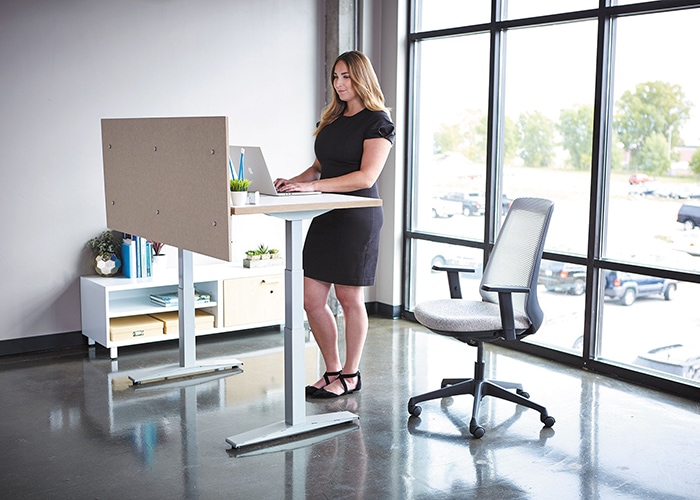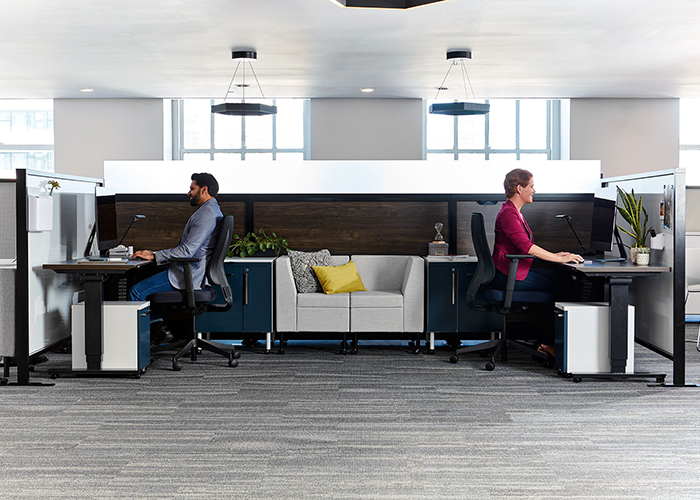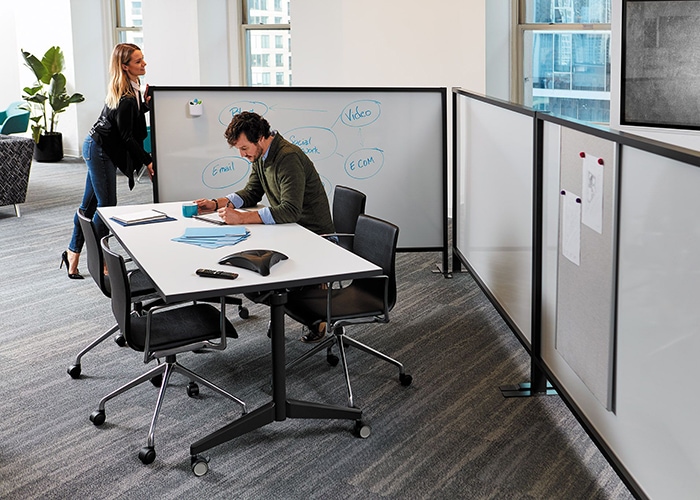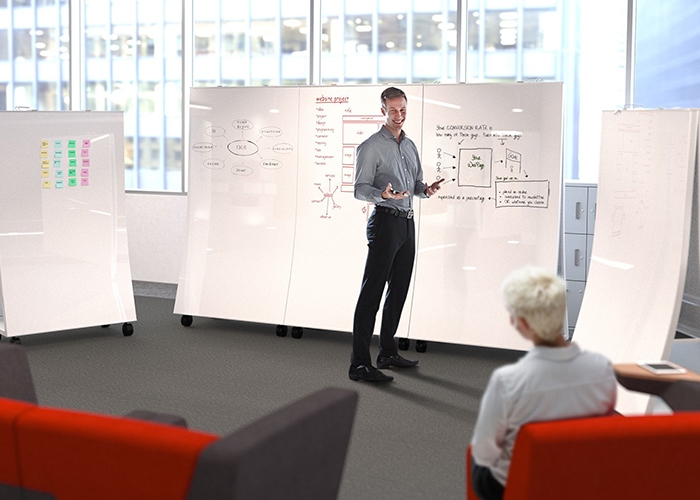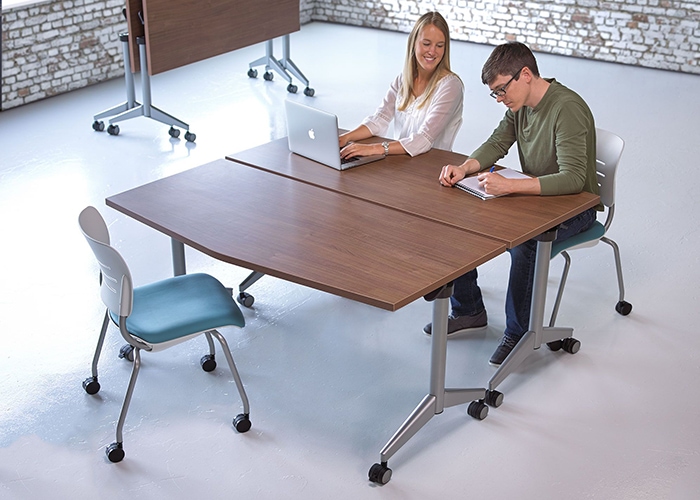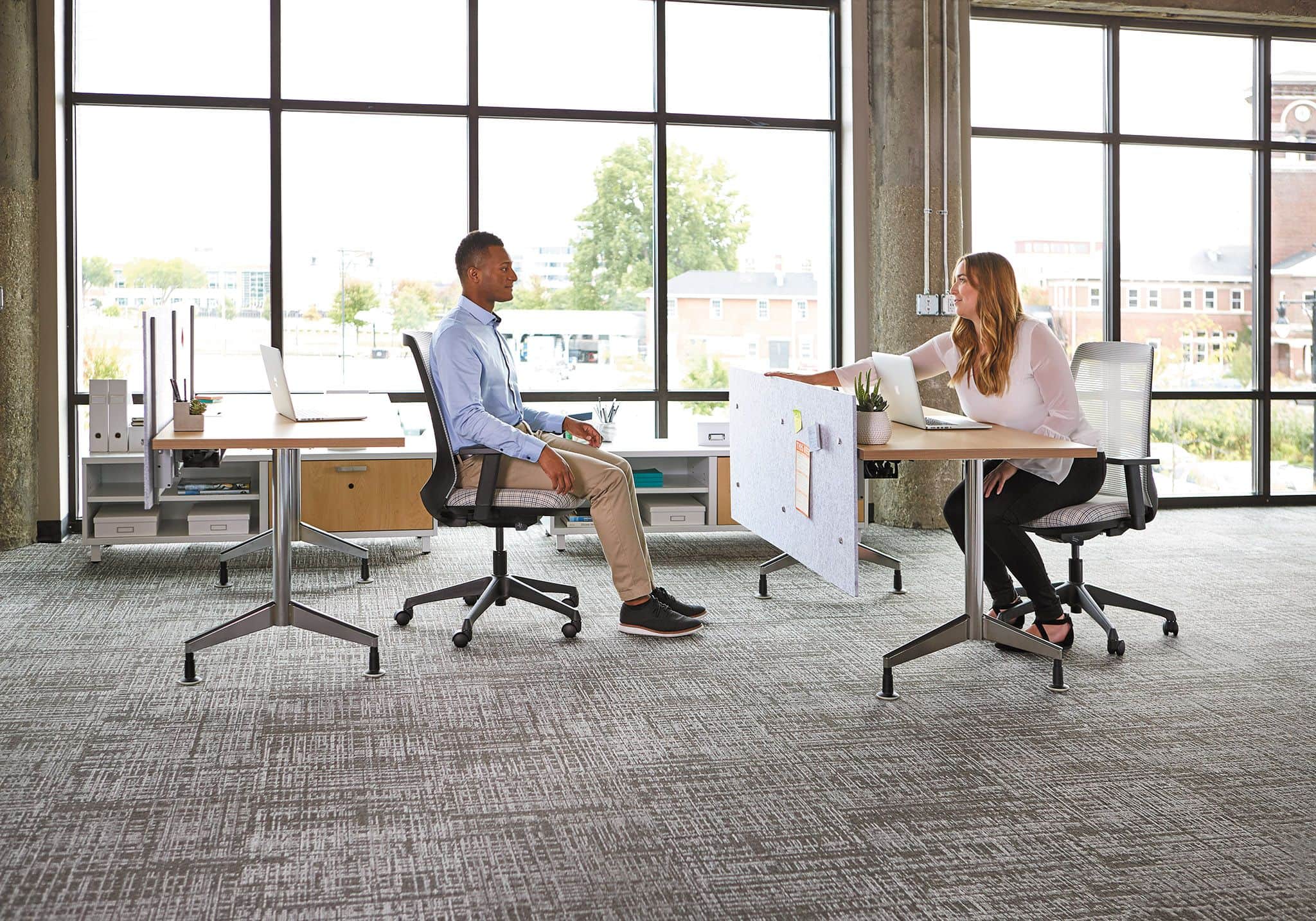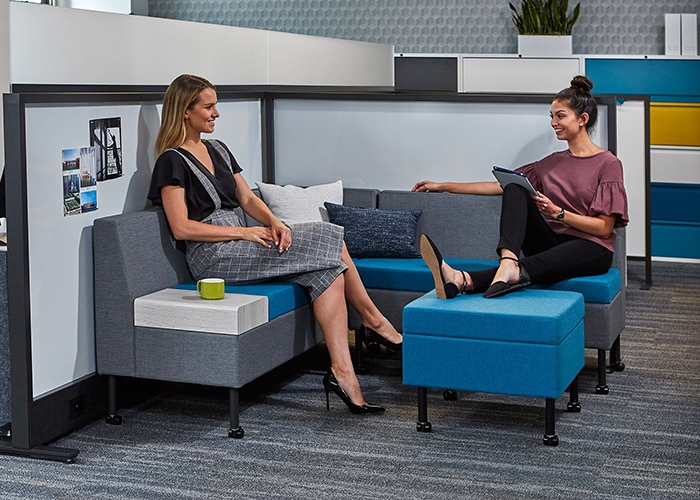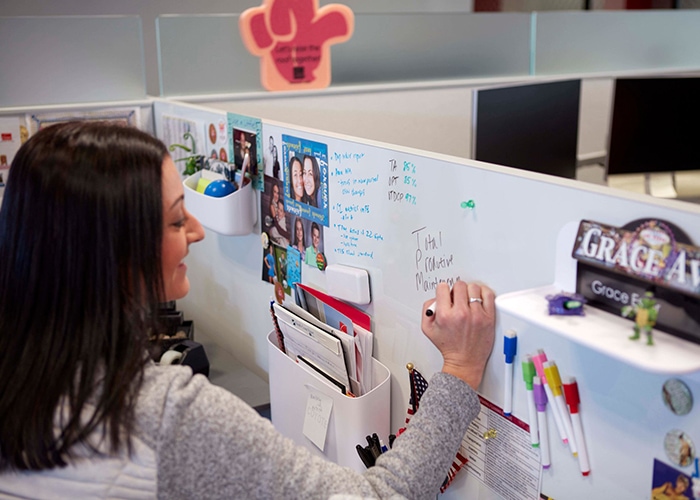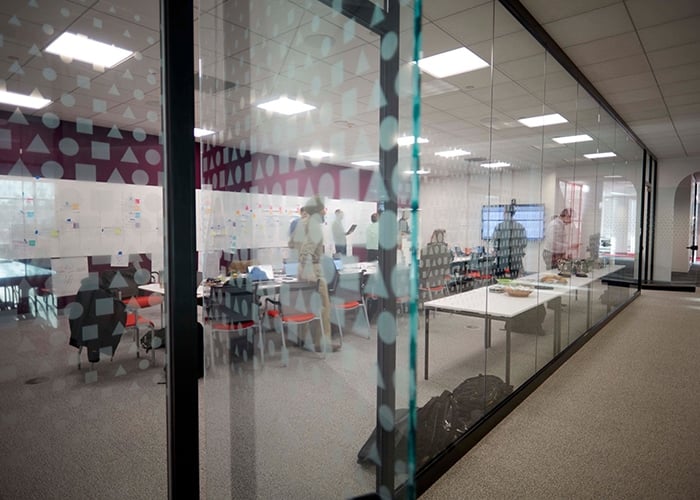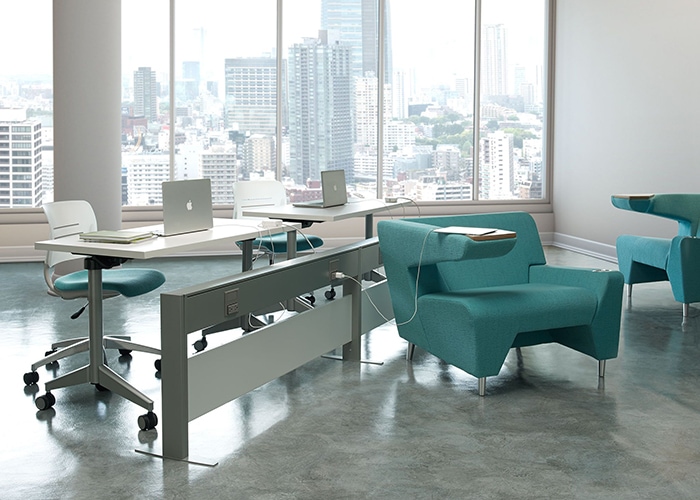
all about
Work Styles
During the course of the day, we work many ways. Whether alone, on-the-go, or collaboratively in groups, the goal is the same – to do productive work. Using a human-centered design approach, we’ve identified four common work styles that encompass employee and student preferences and different types of work:
- Focus
- Interaction
- Regenerative
- Ideation
These work styles play a key role in how furniture and the overall work and training environment can positively impact employee morale and productivity, as well as health and wellness. In fact, our studies have shown that companies that facilitate a variety of work styles within their work environment significantly increase productivity and employee satisfaction.
The information that follows provides details about these four key work styles and how to support them with furniture and space design solutions. Go ahead, work your style!
The Core Four
Focus
This is about you, the individual. Your work is accomplished alone. You determine where and how you are most productive. You control the noise levels around you and the level of privacy needed.
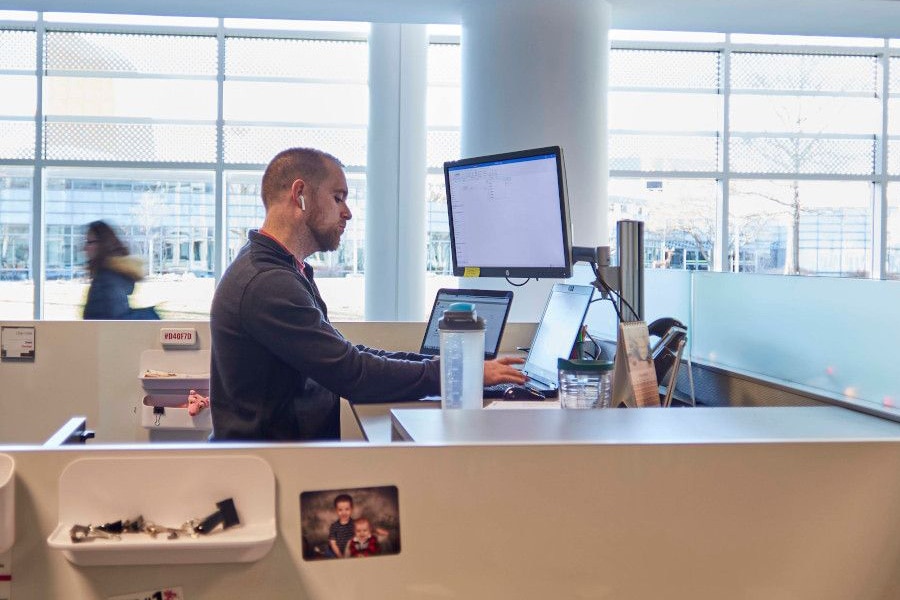
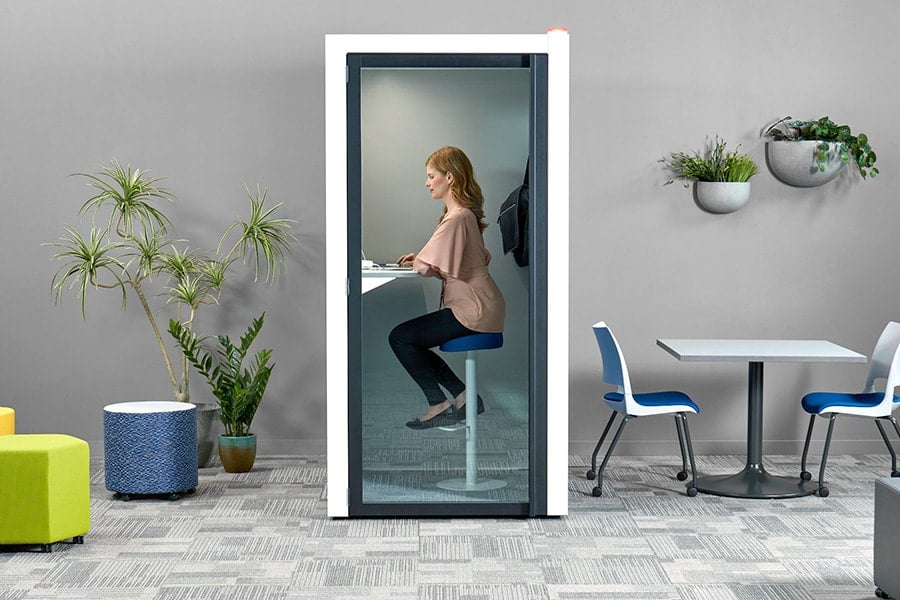
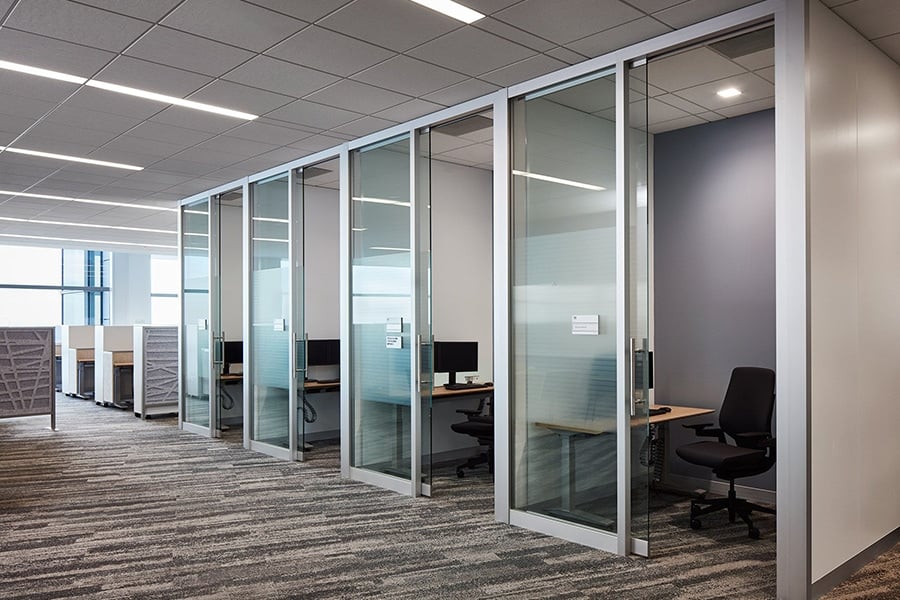
Interaction
You work best in a semi-private but shared environment. This style ensures a level of privacy but spurs conversation when needed.
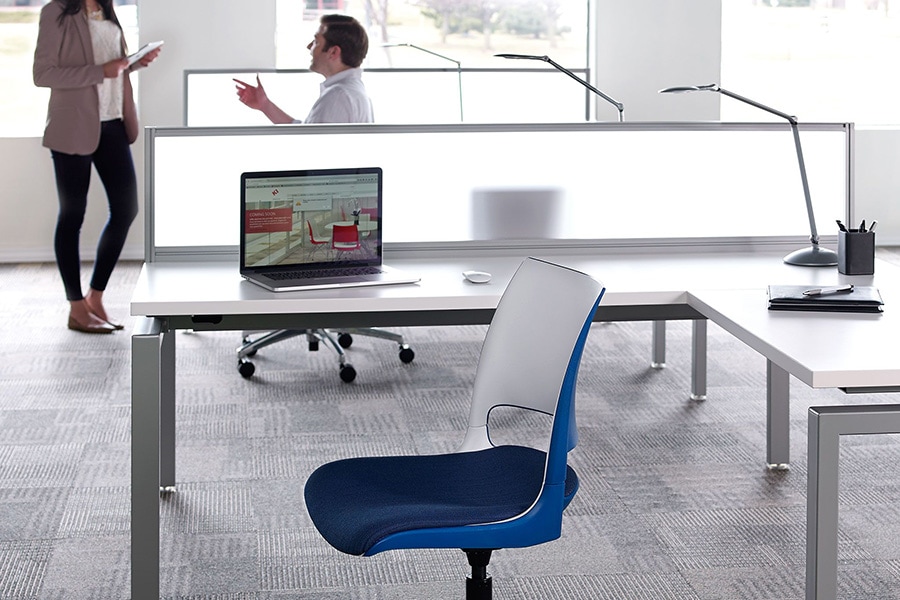
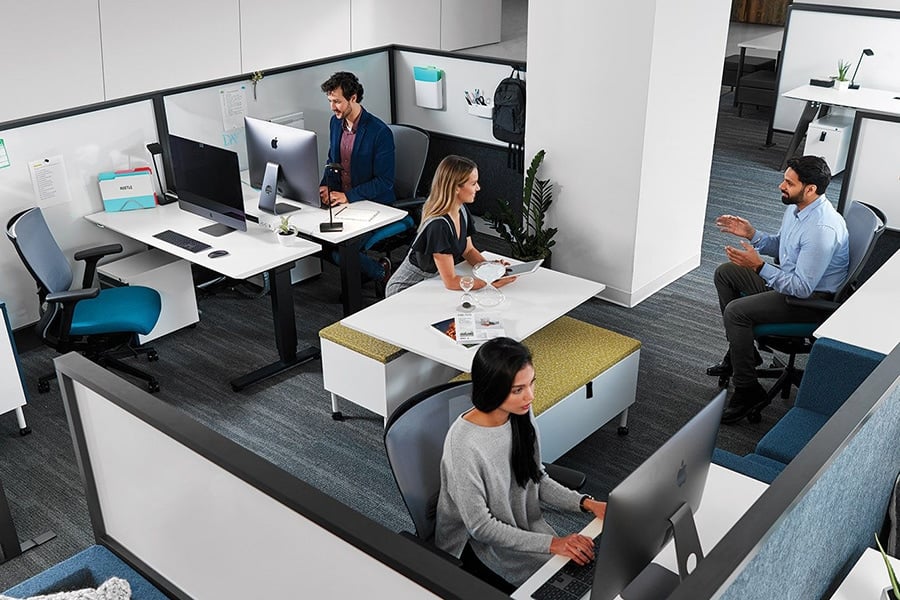
Regenerative
There are times you need to refresh and revitalize creativity. Doing activities with coworkers or working in places outside of your norm allows you to reconnect with renewed focus.
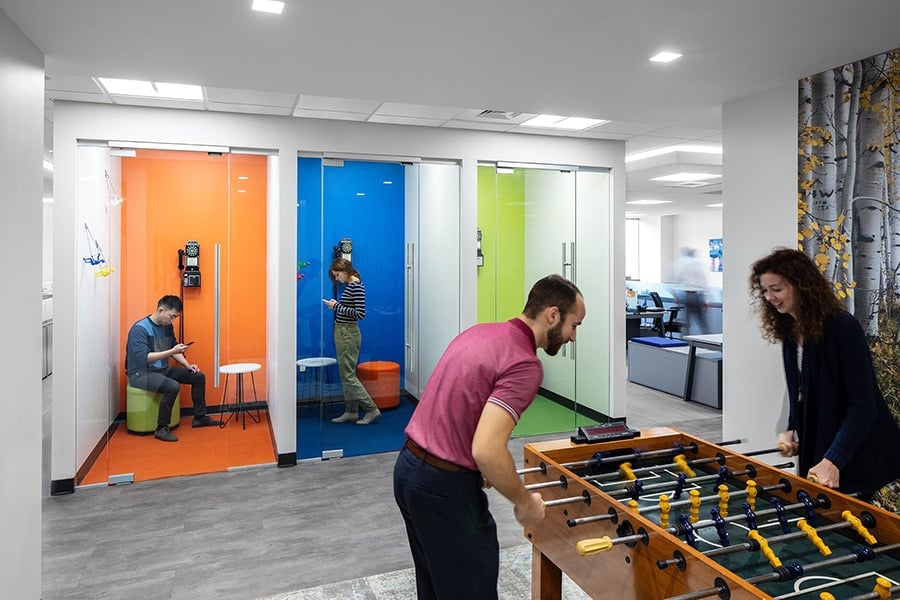
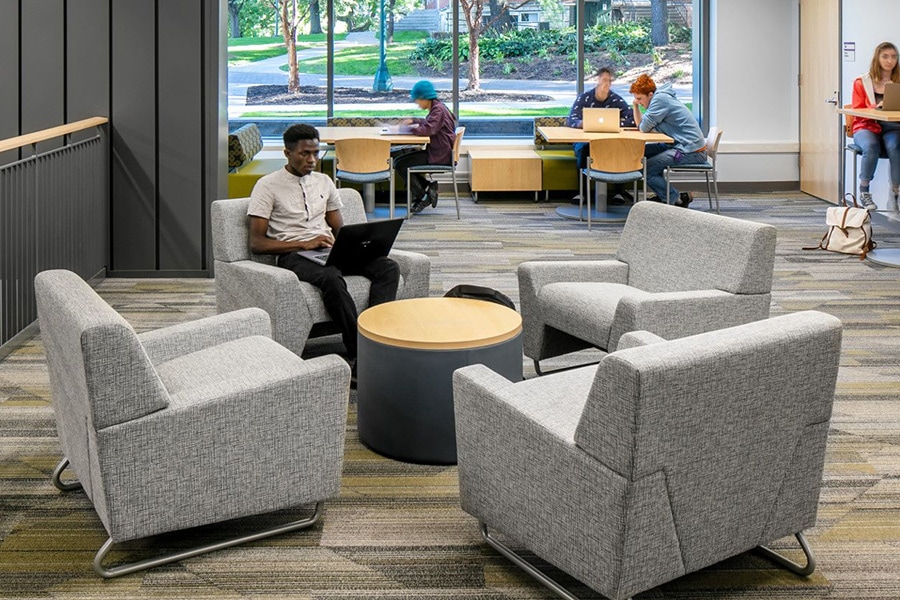
Ideation
This is about bringing people and ideas together. You brainstorm, educate and collaborate in areas that allow you to share. Privacy concerns are low as you want the free flow of information and communication.
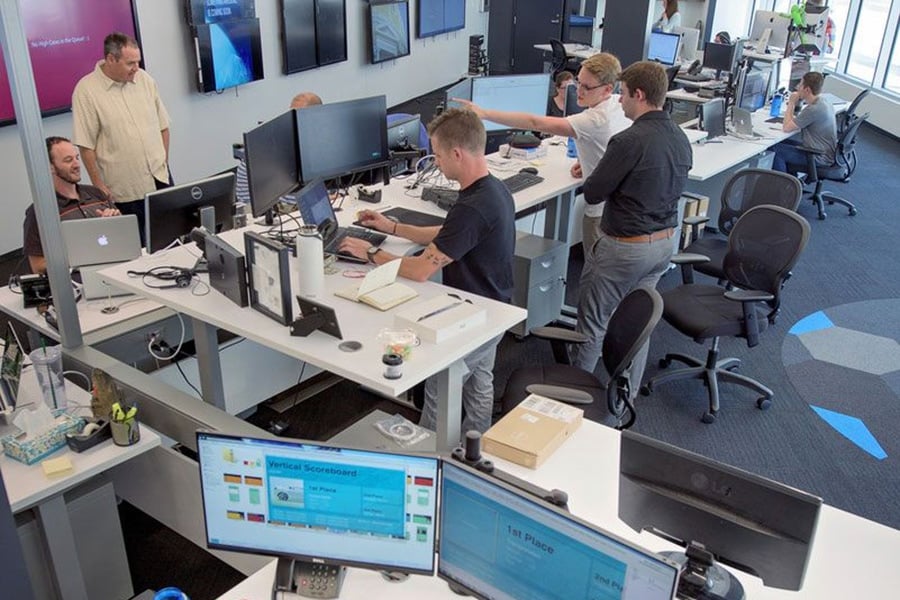
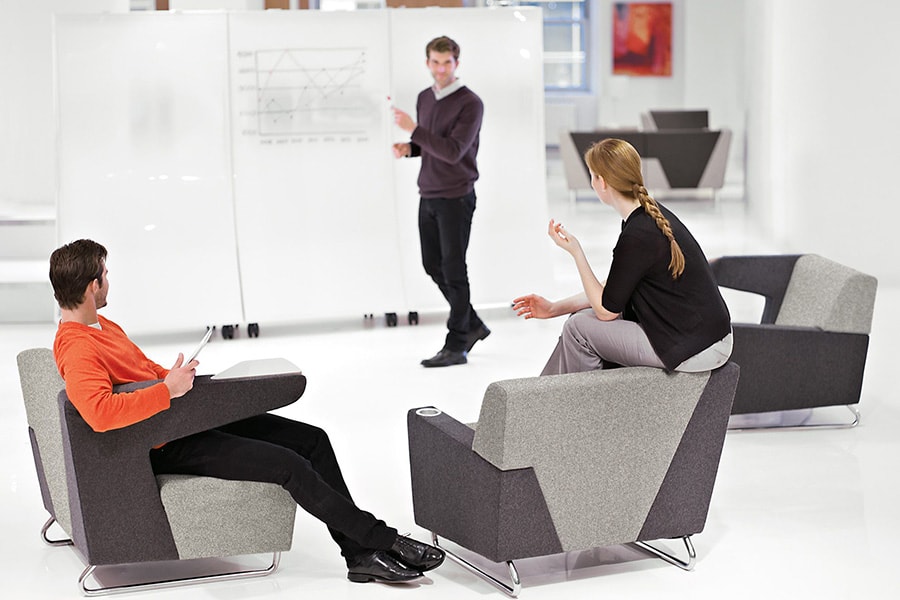
Workspaces for All
Employees have officially moved out of assigned workspaces. Up and coming generations have all but demanded freedom in how and where they work, as they know this flexibility enables them to be most effective and productive in their roles.
 93%
93%
of surveyed Fortune 500 companies are integrating spaces for employees to work outside of their assigned workspace.
 58%
58%
of modern work environments are now comprised of collaborative areas
How Do They Work?
So, where are employees working, if not in assigned workspaces?
Here's how our survey results break down:
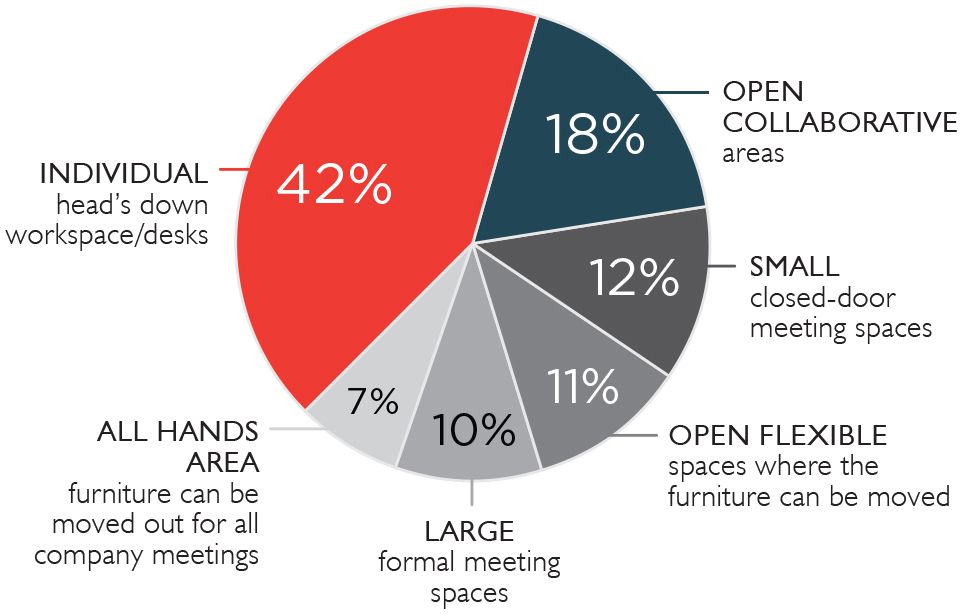
Support the Space
A strategic mix and application of these dynamic, transitional furniture solutions will go a long way in creating environments that support employee work styles, enabling them to work smarter, collaborate efficiently and be more productive in the modern workplace.
Let's Connect
We’d love to help you optimize your space to support various work styles. Connect with your dedicated KI specialist to begin the discussion!
